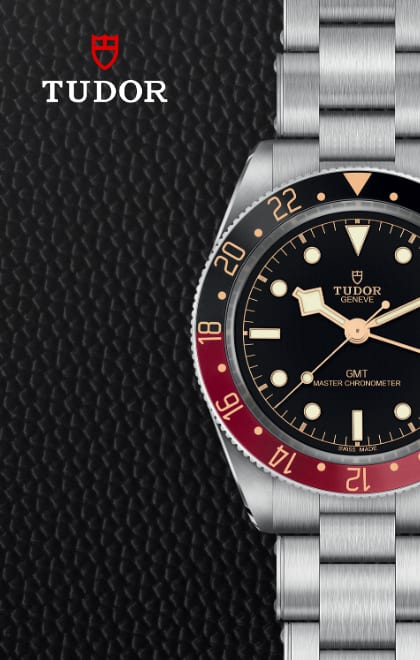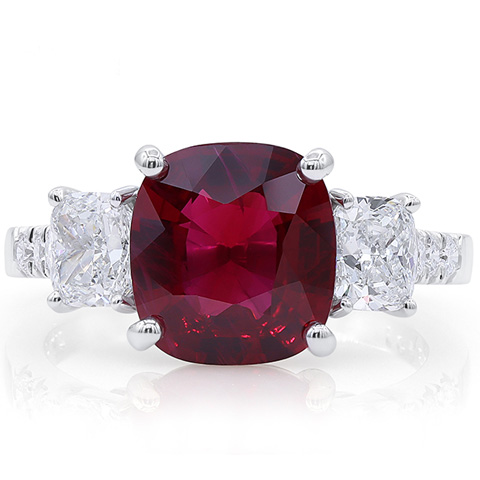
Audemars Piguet vs Patek Philippe Watches: Battle for the GOAT
The Frazier and Ali of the watch world are as similar as their fisticuffs counterparts. Both are Swiss. Both exceed a centurion history. And both are considered foundationary members of an elite class of culture. Audemars Piguet, colloquially referred to as ‘AP’, is vastly sought after today for its Royal Oak series of luxury sports watches.
At the same time, Patek preens classic—catered to privy favor at Saville Rowe, expressing the very best of haute-horology. Whether you’ve heard of one, both, or neither, you and I are going to reflect on the reverence of these titanic icons, the brands beyond their history, and their ability to enamor modernity.
About Audemars Piguet Watches
Congruent with the uninspired naming strategy of 19th-century establishments, Audemars Piguet was named after its founders—Jules Louis Audemars & Edward August Piguet. From the get-go, it’s a rather unlikely story filled with all the romance you’d expect from a pair of pedants.
Once upon a time, future entrepreneurs of an industry juggernaut were childhood friends, infatuated with nature’s most valuable commodity—time. Jules contrived an interest in clock manufacture (as it was previously called) from his father’s intrigue deep within the heavenly scapes of Switzerland’s Vallée de Joux.
His specialties resided in the painstaking manufacture of handcrafted movements—from their mechanical development to their final fittings within a case. Edward Piguet’s youthful aspirations and parental attention aren’t as similarly documented as his partnered friend. What we do know is that the evolutions of his interest grew to fill the vacancies in Jules’ expertise.
Notably, much of Piguet’s watchmaking contributions were in systems regulation. If you’re not sure what that means, think of the process by which a mechanical movement keeps time in check. I’ll likely be eviscerated for saying this, but true vintage AP—I’m talking the period between their 1875 inception and the Quartz Crisis—was a rather mundane time for the brand.
Unlike Rolex, whose claim to fame took the form of tool-oriented watches and a value proposition that spoke to more than the elite class— AP didn’t have a USP they could lean on. That’s not to say that they didn’t have an impact on the industry because they absolutely did. You can thank Audemars Piguet for the complications like the jumping hour and design innovations like the vastly popular skeleton watch.
If it weren’t for a man of consequence, eponymous for horology’s greatest designs taken on AP as a client, you’d never see the name touted as a must-have holy grail in every watch collector’s toy box. Who was the man? Gerald Genta. What came of his tasked expertise? A series of watches so successful it would become one of the most sought-after—and copied—designs in the world. But more on that later.
About Patek Philippe Watches
You’ll be pleased to hear that while Audemars Piguet is globally recognized by its initials—nobody calls Patek Philippe ‘PP’. Today, Patek Philippe is like a classified document. You’ll be hard-strung to get your hands on one unless you’re on a need-to-know basis. And Patek has made it abundantly clear they need to know.
The parallels between its aforementioned competition follow a similar timeline, with similar people. But their start didn’t come together as smoothly as it did in AP’s mountainous birthplace. To start, it may have been a Swiss outfit but the rough outline of what would later become Patek Philippe started as a Polish partnership between watchmakers Antoni Patek and Franciszek Czapek, forming Patek’s first venture—Patek, Czapek & Cie in 1831.
During their six-year stint, their products reflected the timekeeping of the era—handheld pocket-watches often slung passively abreast. Riddled by disagreement, though, the relationship didn’t last long, eventually dissolving in 1845. Funnily enough, the situation gallicized for both men. Franciszek literally changed his name to Francois while Patek renewed his partnership with a Frenchman — the now suffixed Philippe.
Where Audemars Piguet had a rather ineffectual early career, Patek Philippe’s illustrious career garnered attention as quickly as it began. Within the same year of its 1851 incorporation, Queen Victoria acquired her first Patek at the Great Exhibition of London and soon after directly purchased a piece uniquely studded in more than your average bust down — talk about a glowing recommendation for a new brand, eh? Following the Queen’s interest, Patek Philippe became an internationally renowned jeweler and timekeeper for royalty and the political elite.
They were astute innovators enamored mostly by astronomical complications, introducing a myriad of firsts like their 1925 adaptation of the perpetual calendar in a wristwatch and the first movement with an annual calendar in 1996.
While their classic watches required no introduction, by the time the seventies rolled around, the watch world noticed a cultural shift in what people wanted out of a timepiece. Execs at Patek didn’t need a crystal ball to see that the ballroom drapes were coming down, and a change of scenery was key to the brand’s godly grip on the industry.
Six years after Gerald Genta came up with the Royal Oak for AP, the young accoladed designer answered the call to produce an exquisite timepiece with the reverence of Patek Philippe without the day-to-day shortcomings of a dress watch. What followed would directly compete with AP’s Royal Oak and propel Patek Philippe into another stratosphere in the new millennium.
Goliath VS Goliath: The Battle of Two Iconic Swiss Watch Brands
Bitter rivals or titans within their own class? Each is known for its own segment and is successful in its pushes to excel in areas beyond its name. What do I mean? Well, it’s no secret AP likes their sports watches, but they’re not afraid to serve up some Hors d’oeuvres.
On the flip side, Pateks often reside under tailored cuffs at some secret gathering that neither you nor I have any clue about. And yet the Nautilus and Aquanaut are a common trope of the successful athlete in jean jackets and Air Force Ones.
Now I’ve gone on and on about their apparent similarities, but when the rubber meets the road, there are some differences. The ex-business analyst in me has been waiting to say this for some time— let’s get some competitive analysis in and see who’s who.
Brand Recognition
Excluding Vacheron Constantin, we’re looking at the faces of horology’s Holy Trinity, so brand recognition really comes down to who you ask. In the upper echelons of society, where gray-haired cigar smokers are commonplace, you’d find a leaning towards Patek.
The next generation of watch enthusiasts is unlikely to agree, melding with the youthful exuberance of AP’s Royal Oak collection a touch more. Sometimes it’s generational, and sometimes it’s just a matter of taste. As my sensibilities start to take on a greater measure of calm, I’d put Patek Philippe on top, but we’re splitting hairs at this point.
Model Variety
Despite my compulsion for watches, my genetic makeup mostly constitutes gasoline, rubber, and some missing bolts. My current love interest—Porsche—used to be the bane of my intensely opinionated childhood existence.
I remember flicking through their catalogs wondering why there were dozens of iterations of 911 with stark price changes, that—aside from swathes of color palettes—looked the same as the last. It wasn’t until I immersed myself in Stuttgart’s philosophy of the perfect sports car that I came to understand the subtleties of dissimilarity.
The umbrella variety of Patek Philippe is much like Porsche. The catalog opens up with three dress watches; the Complications, the Grand Complications, and the Calatrava, each of which—like the rest—are dizzyingly multifarious.
Tucked into the middle are two more effeminate options which co-opt different takes on the rectangle. Finishing off the range are three sports watches that—the Nautilus, the Aquanaut, and the Twenty~4—get decidedly more usable and, for some reason, more affordable as a result.
Audemars Piguet prefers expanding the catalog within a small selection of models rather than spilling more menu derivations than an Olive Garden menu. You’ve got three overarching Royal Oak series (which I’ve summarized as bluntly as possible):
- Royal Oak: For the small wrist.
- Royal Oak Offshore: For the big wrist.
- Royal Oak Concept: For the bold wrist.
And if you’re not an AP buyer just for the hype train, there’s the Code 11:59. If you can forgive the name for sounding like a G-Shock for the kindergarten graduate, it’s a well-conceptualized dress watch without the uppity attitude of A. Lange & Söhne’s astute showcase.
Personally, they don’t come close to Patek’s Calatrava unless you’re dipping your feet in the big boy stuff. I’m talking Code 11:59 Perpetual, which might as well be a looking glass into space or some of their open-worked options.
Build Quality & Durability
Neither brand here is stranger to the epitome of watchmaking materials and the scrutiny by which those materials are put together. Depending on the model, some of the more precious materials are left out. Patek omits yellow gold, ceramic, and titanium from its Nautilus range, while the endless alternates out of the Royal Oak series add them on top of their standard steel and white gold offerings.
Really though, it’s an appeasement to brand identity more than it is a representation of who pays more attention to build quality. We’re talking Rolls-Royce and Bentley here. No corners are cut in the mission to produce the most luxurious wristwear on earth.
Movements
If we’re talking sports watches, the Patek has to arrest superiority to its competition. The 324C Calibre in the uncomplicated variations of the Nautilus is okay—not a description you expect from a watch that costs as much as a deposit on a house.
You get 45 hours of power reserve, which isn’t much to boast about, and the movement doesn’t hack seconds. Tell someone specs like that without mentioning the Patek Philippe name, and most people are likely to guess a machine-made Miyota special for the average Joe.
Free of complications, excluding your bog standard date, the Royal Oak’s recently revised 50-year-old automatic movement—calibre 2121, now 7121, fairs a bit better. You’ve got more jewels at 40, more power reserve at 60 hours, and, thankfully, some hacking seconds.
If you’ve gone this far with no idea what it is, it’s basically a way to stop the entire movement when you pull the crown out to adjust the time. It’s an extra layer of precision to know the seconds stop right where you left ’em rather than continuing on as if nothing ever happened.
Price, Resale & Rarity
Sneaking into either brand at retail will require you to have one of two things and a non-negotiable prerequisite of near-limitless money. Yeah, if you were thinking having a lot of money was it—at this level, it’s not that simple. At this level, there’s a relationship requirement with either your dealer or the brand themselves.
You can’t buy a watch fit for royalty if nobody knows your name. Or at least that’s what the dealer seems to dictate. Aside from a relationship, you’ll also need a collection of some special items if you want an allocation for some special pieces. Such is the way the elite world goes.
Audemars Piguet vs Patek Philippe Watches: Top Models Comparison
Okay, so now that we’ve got a baseline on Patek Philippe and Audemars Piguet, I’d say we move on from comparing apples to oranges to watches that deserve to fight each other. I’m going to take a look at each model from AP and Patek as a whole because, like I said, there are like 30 variations of each, and comparing all of them to the other is going to take another eon.
Audemars Piguet Royal Oak vs Patek Philippe Nautilus
In my infancy as a watch collector (pre-musings of the AP catalog), I thought the Bulgvri Octo was going to be the only thing with 8 sides to drag my wallet to hell. Even while I was up to speed with haute-horology, my dollar store eyes never figured the Nautilus was anything more than an oval with rather pronounced edges.
Where the Royal Oak conforms to a standard octagonal orientation, there’s a bit more stretching on the sides of the Nautilus’ bezel. Both watches have a brushed bezel finish on and are geared for daily driver exploits. Every Royal Oak’s face leans on its ‘Petite Tapisseries’ design of embossed squares of equal size, while the Nautilus’s range of stripes or plain faces institutes a playful degree of freedom.
The sizing of both has varied through the years. AP’s Royal Oak seems to carry more favor beneath the 40mm veil, while the shape of the Nautilus conforms above. It’ll always be a matter of preference and your own wrist size as a determinant of which is best, but it’s nice to know they’re each varied.
| Audemars Piguet Royal Oak | Patek Philippe Nautilus | |
| Case Sizes(Ref. numbers are just examples of possible size range) | Royal Oak 39mm 15300: 2005 — 2012.Royal Oak 41mm 15400: 2012 — 2019.Royal Oak 37mm 15450: 2012 — 2022.Royal Oak 41mm 15500: 2019 — Present.Royal Oak 37mm 15550: 2022 — Present. | Nautilus 42mm 3700: 1976 — 2006Nautilus 40mm 5711: 2006 — 2021Nautilus 41mm 5726: 2006 — Present |
| Materials | Yellow Gold, White Gold, Frosted White Gold, Rose Gold, Steel, Platinum, Titanium, Ceramic | Rose Gold, White Gold, Stainless Steel |
| Water Resistance | 50M | 60M – 120M |
| Current Movements | Automatic: Calibre 2120, Calibre 2121 Quartz: 2612 | Automatic, Mechanical and Quartz |
| Strap | Metal Bracelet, Leather Strap | Metal Bracelet, Leather Strap |
| Additional Features | Petite Tapiserrie Dial, Riveted Octagonal Bezel | Moon Phase Complication, Octagonal Bezel |
| MSRP | $15,400 – $98,000+ | $31,940 – $151,000+ |
Audemars Piguet Royal Oak Offshore vs Patek Philippe Aquanaut
Okay, so as far as the AP argument goes, the Offshore is literally a Royal Oak for people who train forearms more than usual. If you’ve got a big wrist but still want the billeted octagon from Genta’s Hall of Fame, the Offshore was designed for you.
Explore the
Biggest Pre-Owned Collection of Luxury Watches
The Aquanaut, however, is offered in the same sizes as the Nautilus and defers in its strap, commitment to ruggedness, and more playful aesthetic. On its face, the Royal Oak Offshore continues to blow things out of proportion with a ‘Mega’ take on the tapisserie design. The blocks have been zapped with a growth ray to look like ceramic tiles in a millionaire’s spa house.
The Aquanaut is less congruent in its departure from the Nautilus. The face is bound by the rules of a largely stretched grid available in a variety of more playful colors. The Offshore and the Aquanaut alike are bold Miami-bred watches that scream, “look at me and remember my name”.
| Audemars Piguet Royal Oak Offshore | Patek Philippe Aquanaut | |
| Case Sizes(Ref. #s are just examples of possible size range) | Royal Oak Offshore 42mm 25721ST: 1993 — 2004.Royal Oak Offshore 43mm 26420SO: 2021 — 2023.Royal Oak Offshore 44mm 26176FO: 2009 — 2012.Royal Oak Offshore 48mm T3 25863TI: 2003 — 2004 | Aquanaut 40mm 5261R: Aquanaut 41mm 5167A-001: Aquanaut 42mm 5168G-001: |
| Materials | Yellow Gold, White Gold, Frosted White Gold, Rose Gold, Steel, Platinum, Titanium, Ceramic, Diamonds | Rose Gold, White Gold, Stainless Steel |
| Water Resistance | 300M | 120M |
| Movement | Automatic: Quartz: 2612 | Automatic, Quartz |
| Strap | Rubber Strap, Metal Bracelet, Ceramic Bracelet, Alligator Strap, Calfskin Strap | Rubber Strap, Tropical Composite Strap |
| Additional Features | Mega Tapisserie | Embossed Stretching Square Dial |
| MSRP | $25,400 – POR | $24,250 – POR |
Audemars Piguet Code 11.59 vs Patek Philippe Grand Complications
Now we’re into Patek’s bread-and-butter territory. And in my opinion, as whimsical as Code 11.59 presents to be, it’s a far cry away from the revered excellence of the Grand Complications series.
Both models are picky on size compared to the previously discussed offerings, rarely straying away from the 41mm and 42mm case sizes. Bearing in mind the league change from luxury sports watch to dress watch, the shapely polished bezels are no longer of octagonal measure.
The Code 11.59 does these gradient faces that pull a darkened edge into some centric, deeply colored point. For me, it doesn’t work as a dress watch and looks a bit tacky, but that’s just me.
| Audemars Piguet Code 11:59 | Patek Philippe Grand Complications | |
| Case Sizes (Ref. #s are just examples of possible size range) | Code 11:59 26393OR 41mmCode 11:59 26398BC 42mm | Grand Complications 5207G-001 41mmGrand Complications 5208R-001 42mm |
| Materials | White Gold, Pink Gold, Black Ceramic, Blue Ceramic, Stainless Steel | 18K Gold, Rose Gold, White Gold, Yellow Gold, Platinum, Stainless Steel |
| Water Resistance | 20M-30M | 30M |
| Movement | Self-Winding | Self-Winding, Hand Wound |
| Strap | Alligator Skin, Leather Strap, Rubber Coated Strap | Alligator Skin, Metal Bracelet, Rubber Strap |
| Additional Features | Openworked (Skeleton option) | “Gouette” Bracelet |
| MSRP | $34,000 – POR | $34,000 – POR |
Conclusion
When the stakes are this high and the money this great, those that can afford it won’t mind dipping their feet in both camps just for the heck of it. The Royal Oak is Audemars Piguet, while the Nautilus isn’t Patek Philippe.
If you’re looking for a daily luxury watch with a robust band as iconic as Rolex’s Jubilee, I’d go for the Royal Oak. There’s just more variation in size and material, and the watch’s temperament is more easily enjoyed in a casual setting than Patek’s Nautilus.
If you’re planning on doing some glamping or otherwise high-brow adventuring, the Aquanaut and its brilliantly dependable strap make for comfortably classy wear. Plus, when embellished in those deeper, more natural greens, it finds home beyond gated suburbia and highrise opulence.
But if the Queen’s in town and you’ve been invited for tea, nothing should be considered beyond the Patek Philippe Grand Complications. Regardless of which complication you go for, which size or material, whether you know its history or have memorized all its references.
It’s Everest, the peak of watchmaking excellence, and while Code 11.59 may have some supremely limited reference competitors, it just doesn’t have the same historical significance.
About Exquisite Timepieces
Established in 1998, Exquisite Timepieces is your one-stop shop for all things luxury watches! We are an authorized dealer for 60+ luxury watch brands including Omega, Hublot, Seiko, & Longines! We are proud to showcase one of the world’s largest pre-owned watch collections, including renowned brands like Rolex and Patek Philippe. Check out our brand new watch arrivals here and popular pre-owned listings here.




















